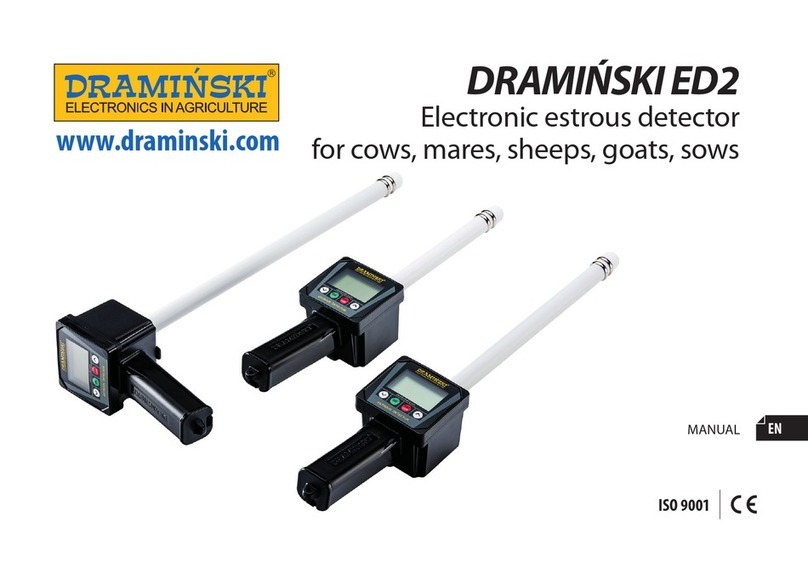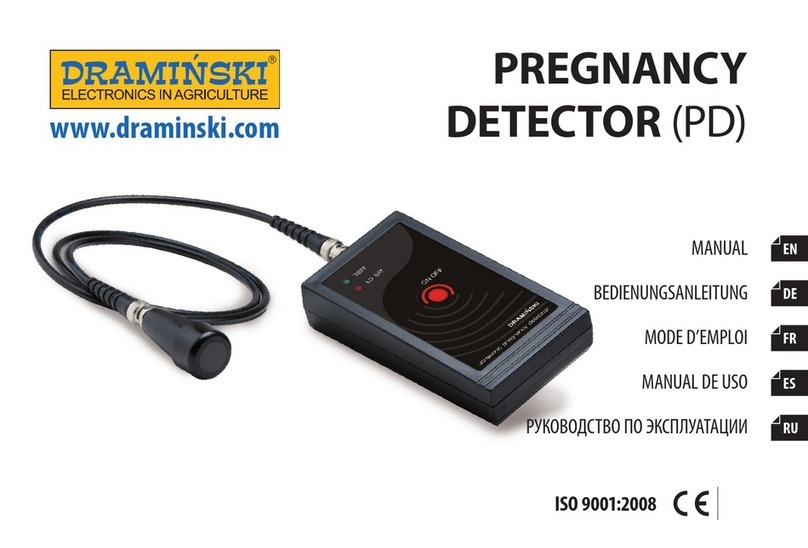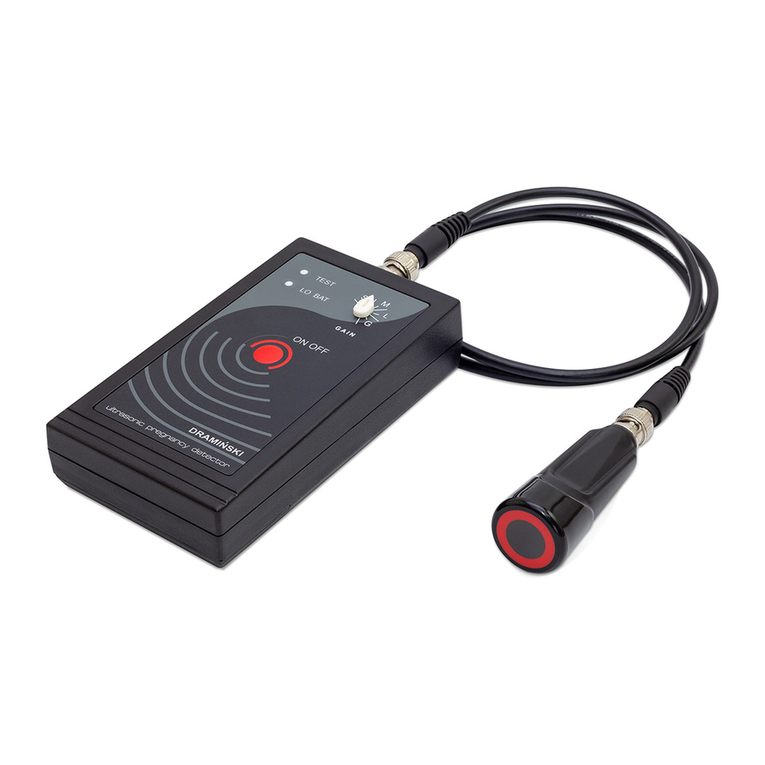
9
at the face of a clock. (Imagine the dog entering the bitch coming
up to her from underneath at an angle).
This angle varies on breed type, size and individual bitches
and it is not uncommon for the angle to be much steeper,
with the probe being inserted almost vertical.
Using the correct angle of insertion will facilitate extremely
simple, safe and easy entry, causing no discomfort to your
bitch whatsoever.
With the probe inserted to the required depth, rotate the entire
unit through 360 degrees (i.e. a full rotation) so that the
electrodes come into full contact with the vaginal mucus.
Measurements are best taken in a single ‘central’ position after
inserting the probe to a sufficient depth to just before the neck
of the cervix when a slight resistance is felt.
Allow approximately 30 seconds for the probe to achieve the body
temperature of the bitch, to ensure accurate and consistent
readings and then without withdrawing the probe, take a few
readings and average the results.
It is IMPERATIVE that before each reading is taken, the unit is
rotated through 360 degrees to obtain ‘fresh’ mucus on the probe.
In this way accurate and consistent readings are obtained and any
excessively high or low ‘rogue’ readings, where mucus has not
been ‘picked up’ for example, can be discarded.
Note!
Once adopted, a consistent method should be used for all the
measurements, i.e. the same length of the probe should be
inserted and the measurements have to be taken in the same part
of the vagina. Failing to do so can result in variable and
inconsistent readings.
It is not uncommon for some bitches to provide ‘different’ sets of
readings when measurements are taken in the morning and the
evening for example. However, it can be seen that the profile
trace for the progression of readings will be the same, for both
morning and evening, regardless of the actual value of the
readings.

































